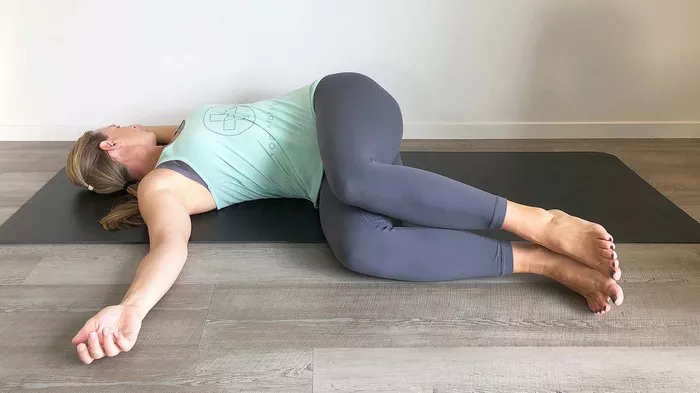Yoga has gained immense popularity worldwide for its physical, mental, and spiritual benefits. Whether you are embarking on a journey to improve flexibility, reduce stress, or enhance overall well-being, starting yoga as a beginner requires some essential equipment, with the yoga mat being at the forefront. A yoga mat not only provides cushioning and support but also ensures safety and stability during practice. However, with numerous options available on the market, choosing the right yoga mat can be daunting, especially for beginners. This guide aims to demystify the selection process by exploring various factors that influence the choice of a yoga mat and reviewing different types based on their materials, thickness, texture, and sustainability.
Understanding Your Needs
Before diving into the specifics of yoga mat types, it is crucial to assess your individual needs and preferences. Consider the following questions:
1. Purpose: What style of yoga will you primarily practice? (e.g., Hatha, Vinyasa, Bikram)
2. Location: Where will you be practicing yoga? (e.g., at home, in a studio, outdoors)
3. Comfort: Do you have any specific physical considerations? (e.g., joint issues, sensitivity to textures)
4. Budget: What is your budget range for a yoga mat?
5. Environmental Concerns: Are you prioritizing eco-friendly materials?
These questions will help narrow down your options and guide you towards selecting a yoga mat that aligns with your unique requirements.
See Also: Does CorePower Yoga Provide Mats?
Types of Yoga Mats
1. Material: The material of a yoga mat significantly impacts its durability, grip, and environmental friendliness. Common materials include PVC, TPE, rubber, cork, and natural cotton or jute.
- PVC (Polyvinyl Chloride): Known for its durability and affordability, PVC mats offer excellent grip but may not be eco-friendly.
- TPE (Thermoplastic Elastomer): TPE mats are a more environmentally friendly alternative to PVC, offering good cushioning and durability.
- Rubber: Natural rubber mats provide excellent grip and are eco-friendly, but they may have a strong odor initially.
- Cork: Cork mats offer natural antimicrobial properties, good grip, and sustainability, though they can be heavier.
- Natural Materials (Cotton, Jute): These mats are often preferred for their natural feel and breathability but may lack the same level of cushioning as synthetic mats.
2. Thickness: Yoga mats come in various thicknesses, typically ranging from 1/16 inch to 1/4 inch. The thickness affects comfort and stability during poses.
- Thin Mats (1/16 inch to 1/8 inch): These mats provide a closer connection to the ground, ideal for balance poses and active styles like Vinyasa.
- Standard Thickness (1/4 inch): These mats offer more cushioning, making them suitable for beginners or those with joint sensitivities, as they provide better support during kneeling or lying postures.
3. Texture: The texture of a yoga mat impacts traction and feel. Common textures include smooth, sticky, and textured (like a pebbled or ridged surface).
- Smooth Texture: Provides a sleek surface that some practitioners prefer for ease of movement.
- Sticky Texture: Offers enhanced grip, making it suitable for styles like Bikram or Hot Yoga where sweat may be a factor.
- Textured Surface: Provides additional grip and traction, enhancing stability during practice.
4. Size and Portability: Consider the dimensions of the mat to ensure it accommodates your height and provides ample space for movement. Additionally, if you plan to travel with your mat, opt for lightweight and portable options.
5. Eco-Friendliness: If sustainability is a priority, look for mats made from natural, biodegradable, or recyclable materials. Many companies now offer eco-friendly yoga mats that minimize environmental impact.
6. Durability and Maintenance: Check reviews and specifications to assess the durability of the mat and understand the recommended care instructions. Some mats require special cleaning methods to maintain their performance and longevity.
Choosing the Right Yoga Mat
Based on your preferences and needs identified earlier, you can now navigate the selection process more confidently:
- For Beginners: A thicker mat (1/4 inch) with good cushioning provides comfort and support during foundational poses and relaxation.
- For Hot Yoga: Opt for a mat with a sticky texture and excellent grip to prevent slipping during sweat-inducing sessions.
- For Travel: Choose a lightweight and portable mat that can be easily folded or rolled without sacrificing cushioning and stability.
It’s essential to test the mat if possible or read customer reviews to gauge its performance in real-life yoga sessions. Many yoga studios allow practitioners to rent or borrow mats, providing an opportunity to try different types before making a purchase.
Conclusion
Selecting the right yoga mat as a beginner involves considering multiple factors, including material, thickness, texture, and eco-friendliness. By understanding your personal needs and preferences, you can choose a mat that enhances your yoga practice and supports your journey towards physical and mental well-being. Remember that investing in a quality yoga mat not only improves your comfort and safety during practice but also contributes to a more enjoyable and fulfilling yoga experience overall.
Related topics:




















